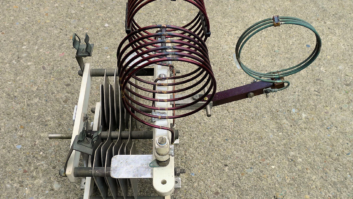WASHINGTON Do towers cause a significant amount of migratory bird deaths? Depending on the answer, rules governing tower lighting may change to reduce bird mortality rates.
For example, the FCC tentatively has decided that medium-intensity white strobe lights at night are preferred over red obstruction lighting systems, “to the extent possible without compromising aircraft navigation safety,” and seeks comment on this and other lighting options.
Other rules concerning tower height, location and the use of guy wires are subject to change as well.
Environmentalists and some Native American tribes claim the towers cause high mortality rates for migratory birds, while broadcasters, telephony companies and those who build, operate and own towers say the figures aren’t significant enough to change the commission tower rules.
Various federal agencies have been trying to answer the bird collision question for years, but more formally since 2003.
The FCC commissioned a study to help evaluate the submitted research. Environmental risk firm Avatar submitted recommendations in 2004; it said more studies were needed to identify specific causes and solutions.
The commission seeks additional comment in a Notice of Proposed Rulemaking on measures that might curb bird deaths from tower collisions. The agency received thousands of comments on the migratory bird issue when it released a Notice of Inquiry under former Chairman Michael Powell in 2003, but there was such a difference of opinion that no conclusion could be reached. Therefore, the FCC needs more information, said Catherine Seidel, acting bureau chief of the Wireless Telecommunications Bureau, responding to a reporter’s observation that many of the questions the agency is asking in the NPRM have been asked before.
There has been no clear indication among observers about whether an FCC majority is expected to favor or reject such changes. Chairman Martin said in November, “All concerns need to be balanced as we go forward” on the issue.
Mortality rates
In the NPRM, the commission asks whether the scientific evidence is sufficient to demonstrate that communications towers are having a significant impact on migratory birds. During the vote on the item at the FCC public meeting in November, Commissioner Michael Copps quoted a figure from the U.S. Fish and Wildlife Service that perhaps as many as 50 million migratory birds die each year after flying into communications towers.
“We need to make sure our practices do not contribute to the bird deaths,” Copps said, yet added that, “We are not faced with an all-or-nothing choice. We understand that communications towers are necessary.”
As of Nov. 2, approximately 104,700 communications towers were registered with the FCC; the total includes existing structures, as well as proposals for new towers or modifying existing structures.
The FWS lists 711 species of migratory birds and estimates that 350 species of non-song birds on the list breed in the United States and Canada and then fly to South America for the winter. Birds such as warblers, thrushes and bobolinks migrate at night and are more susceptible to flying into towers obscured by fog, according to the FWS.
The service has told the commission that somewhere between 4 million and 50 million such deaths occur each year. By comparison, it published a report in 2002 that estimated a minimum of 10 billion birds breed in North America and that the population level of migratory birds during the fall could be about 20 billion.
The Wireless Association CTIA and NAB have argued that “even assuming” the FWS figures are correct and that communications towers cause 5 million bird deaths a year, on the low end of the range, and that there are 10 billion migratory birds nationwide, “communications towers would account for only a 0.05 reduction of the migratory bird population each year.”
CTIA, NAB and telephony companies such as AT&T Wireless, Sprint and Cingular have argued that information on bird deaths is “incidental and biased” and believe “existing evidence is insufficient to show that collisions with towers have a significant impact on migratory birds.”
Seidel said so far, the groups that submitted comments on the issue, environmental and otherwise, differ on the significance of the figures.
Tower unknowns
The American Bird Conservancy, Forest Conservation Council and Friends of the Earth have told the FCC previously that “reported bird kills represent only the tip of an iceberg as the vast majority of tower sites are never checked for mortality.” They also contend that in poor visibility conditions, migratory birds are especially attracted to red steady lights, according to the commission in its NPRM.
Another official from the Wireless Telecommunications Bureau said a previous commenter has suggested that white blinking or strobe lights appear to cause fewer deaths than red steady tower lights, but the commission would like more information to sustain this theory.
While the commission stated its “tentative” preference for medium-intensity white strobe lights, it needs scientific evidence to back the theory; then it would decide whether a tower lighting rule change is warranted. Therefore, the tentative conclusion has not taken effect and may not, depending on the content of the publicly-filed material.
The role in migratory bird collisions of other tower factors — such as tower height, tower location, the use of guy wires and the collocation of new antennas on existing towers — is of interest to the agency. It’s asking whether adoption of a preference for medium-intensity white strobe lights might preclude the need for these additional measures, as well as if such measures would negatively affect environmental matters unrelated to migratory birds, such as historic properties, wetlands or endangered species.
Comments on the item (WT Docket 03-187) were to be due 60 days after publication in the Federal Register.







